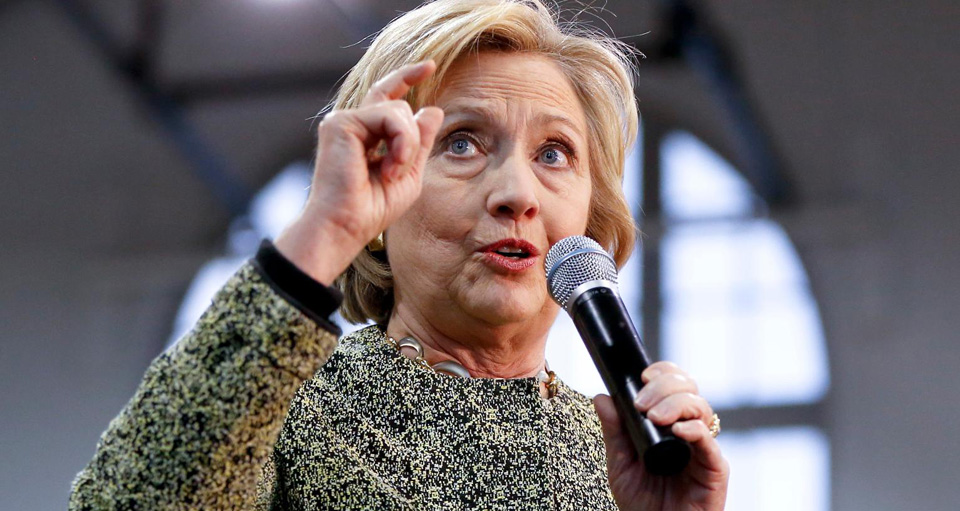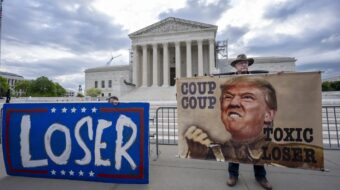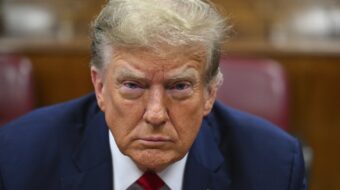
WASHINGTON — Donald Trump often chides Hillary Clinton for not stopping him from using our tax code to turn his business failures of the mid-1990s into an income windfall for himself.
For example, at a rally in Arizona, Trump said “… [Clinton] complains about how I’ve used tax laws of this country to my benefit. … Why didn’t she ever try to change those laws so I couldn’t use them?”
Well, actually Clinton did more than “try.” In 2002, as a senator, Clinton helped plug the major loophole most likely used by Trump.
After obtaining three pages of Trump’s well-guarded tax returns, the New York Times reported Oct.1 that Trump had declared a $916 million loss in 1995, which allowed him to avoid paying any federal income tax for up to 18 years.
Trump later ‘fessed up’ to doing it.
However, Josh Barro, an analyst for Business Insider, wondered how it was possible for Trump to rack up so huge a loss, which “amounted to nearly two percent of all the net operating losses taken on individual income tax returns in the entire country in 1995.”
Barro writes, “One of the big mysteries about Trump’s 1995 tax returns is how he managed to run up such a large tax loss ($916 million) when so many of the losses related to his business implosion of the early 1990s ended up being borne not by himself, but by banks and other creditors that forgave Trump’s debts or otherwise didn’t get paid back.”
In other words, when Trump’s companies went bankrupt he left his creditors – and many people who worked for him – holding the bag. Yet he claimed as a personal loss money neither he nor his corporations had to pay back.
We don’t know for certain, because no one outside of Trump’s inner circle (and the IRS itself) has seen more than three pages of Trump’s tax returns; but Barro is almost certain that Trump ducked paying taxes for more than a decade by abusing a provision passed by Congress during the Eisenhower Administration.
In 2002, Clinton vigorously and successfully supported a bill to stop such abuse.
In 1958, to help small businesses stay afloat, Congress passed a bill that, among other things, allowed for the creation of “S corporations.” These are business organizations that pay no federal taxes. Instead, the investors pay taxes or deduct their losses on personal income tax returns.
Instead of applying the S corporation structure to a small business, Barro believes that Trump used it to form multi-million dollar corporations.
They quickly went into bankruptcy and Trump succeeded in getting his debtors to forgive his corporations from having to pay back large percentages of what they owed.
“In general,” Barro explains, “if someone cancels a debt you owe them, you’re supposed to count the amount forgiven as income.”
This seems fair, right? Any ethical person would be more than pleased to count as income money they borrowed and used without having to pay back their lenders.
But guys like Trump, billionaires who play all the angles, figured out a way to milk a glitch in the wording of the bill that brought S corporations into existence, Barro speculates.
The maneuver was called the “double dip” and was perfectly legal at the time.
Trump probably took a deduction based on his losses as president of his S corporation. Then he took an additional deduction based on his losses as an investor.
In neither case did he have to report any debt forgiveness, so he did not have to declare any income to offset those losses.
Bottom line: Barro believes that Trump took deductions far in excess of the amount of money he had originally put into his corporations in the first place.
If allowing such a things “sounds stupid,” writes Barro, “that’s because it was stupid. The IRS sought to disallow such tax deductions since they were obviously contrary to the intent of the laws around S Corporations,” especially the universally accepted principle that taxpayers can’t take deductions larger than their investment plus lost profits.
But the Supreme Court ruled in 2001, in an 8-1 decision, that a glitch in the way the law was worded allowed investors to use the tax strategy employed by Trump, even if it made no sense. The only way to close the loophole, the Court said, was to change the law.
That’s exactly what happened.
In 2002, Congress passed the Job Creation and Worker Assistance Act, a package of business tax reforms that, among other things, plugged the loophole used by Trump.
Hillary Clinton was one of the most enthusiastic supporters of the bill and helped ensure its passage.












Comments